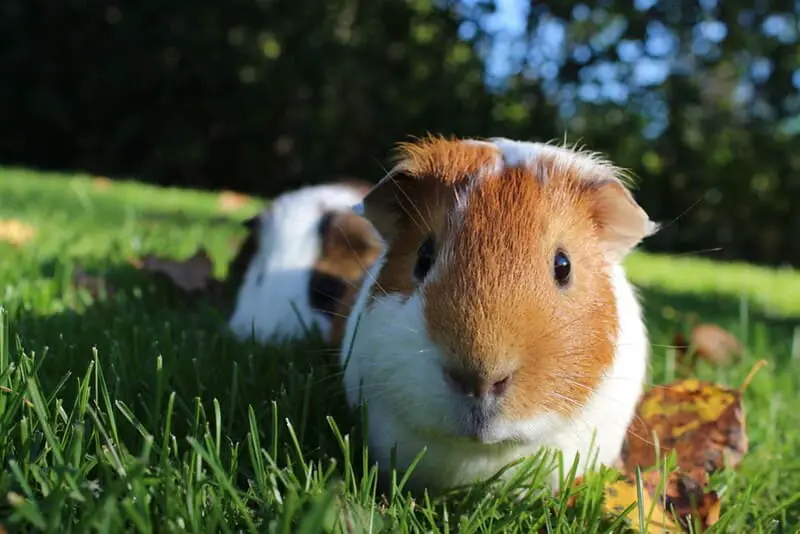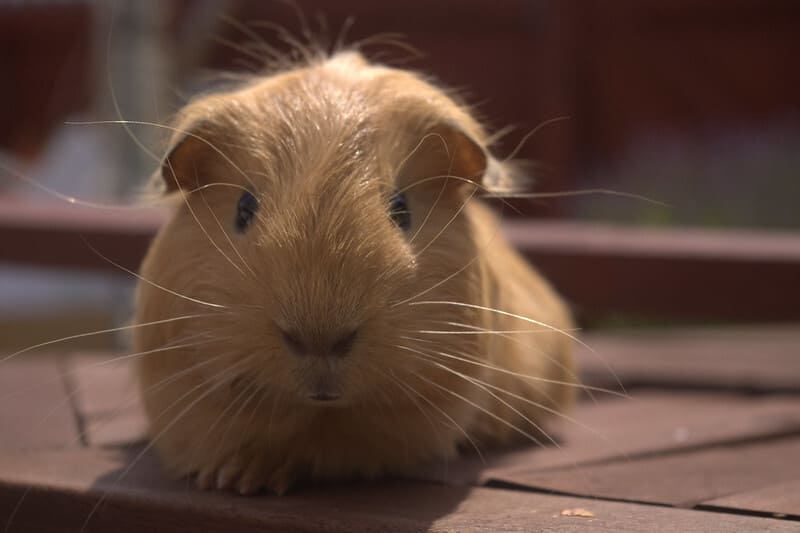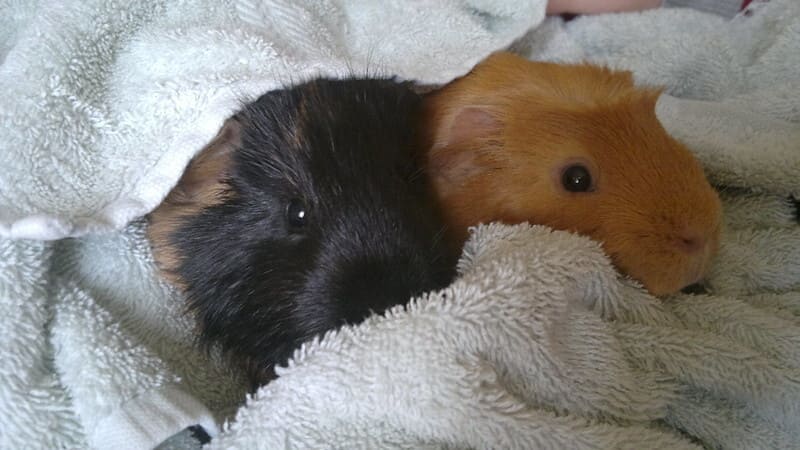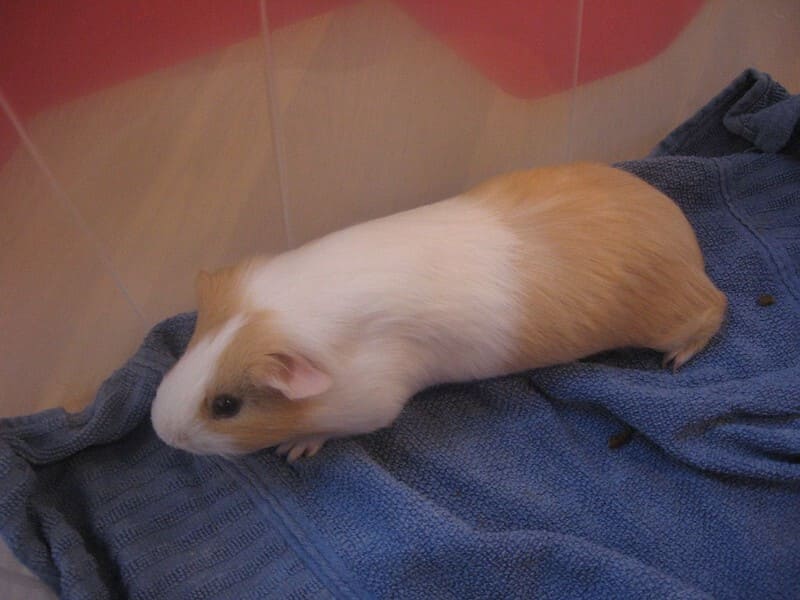Guinea pigs, also known as cavies, are small, gentle, and affectionate rodents that have gained popularity as pets, especially among families with children. Their docile nature and manageable size make them seem like an ideal choice for kids. However, before bringing a guinea pig into your home as a pet for your child, it’s essential to consider several factors. In this comprehensive guide, we will explore the pros and cons of having guinea pigs as pets for children and discuss the responsibilities and considerations that come with it.

Benefits of Guinea Pigs as Pets for Children
1. Low Maintenance
Guinea pigs are relatively low-maintenance pets, making them suitable for children. Unlike dogs that require daily walks or cats that need litter boxes, guinea pigs mainly need a clean cage, fresh water, and a consistent supply of food. This simplicity can be a valuable lesson for children in learning responsibility, as they can help with these tasks and understand the importance of routine care.
2. Social Nature
Guinea pigs are known for their social and friendly disposition. They enjoy interaction with humans and other guinea pigs, which can be especially beneficial for kids. Having a guinea pig as a pet can teach children about empathy, compassion, and the importance of companionship. This can be particularly helpful for kids who may be shy or introverted, as guinea pigs can provide a sense of comfort and a non-judgmental friend.
3. Teach Responsibility
Caring for a pet is an excellent way to instill a sense of responsibility in children. Guinea pigs require daily attention and care, including feeding, cleaning their cage, and ensuring their overall well-being. These responsibilities can help kids learn about commitment, organization, and empathy. Knowing that another living being depends on them can be a powerful motivator for children to develop good habits.
4. Educational Opportunities
Guinea pigs offer numerous educational opportunities for children. Kids can learn about animal behavior, nutrition, and health by taking care of guinea pigs. This hands-on experience can spark a child’s interest in biology, veterinary medicine, or animal care, laying the foundation for future learning and potential career choices.
5. Emotional Connection
Many children develop strong emotional bonds with their guinea pigs. These connections can be particularly significant for kids who may be experiencing stress, anxiety, or loneliness. Guinea pigs provide comfort and a sense of security, serving as a source of emotional support and companionship for children.

Considerations for Guinea Pigs as Pets for Children
1. Lifespan
One essential consideration when getting guinea pigs for children is their lifespan. Guinea pigs typically live for 5 to 7 years, but some may live longer. It’s crucial to be prepared for the long-term commitment that comes with pet ownership, as children must understand that they will be responsible for their guinea pigs for an extended period.
2. Supervision
While guinea pigs are generally gentle animals, children need to be supervised when handling and interacting with them. Guinea pigs have delicate bones and can be easily injured if mishandled. Therefore, it’s essential to teach children how to handle guinea pigs properly and gently.
3. Allergies
Before bringing guinea pigs into your home, consider the possibility of allergies. Some individuals may be allergic to guinea pig hair, urine, or other allergens associated with these pets. Make sure your child doesn’t have any allergies to guinea pigs or hay, which is a staple of their diet.
4. Cage Maintenance
Guinea pigs require a clean and spacious cage. Cleaning their living space can be a significant responsibility. Children should be taught how to clean the cage properly and regularly, as neglecting this task can lead to health issues for the guinea pigs and an unpleasant living environment.
5. Financial Responsibility
Caring for guinea pigs involves financial commitments for food, bedding, hay, and occasional veterinary care. Parents should ensure that their children are financially prepared to cover these costs or be willing to shoulder the financial responsibility themselves.
Are Guinea Pigs Suitable for All Children?
1. Age Considerations
Guinea pigs can be suitable pets for children of various ages, but there are age-appropriate considerations to keep in mind:
a. Young Children (Ages 3-5)
- Guinea pigs may not be the best choice for very young children, as they might not have the motor skills to handle them gently.
- However, they can still learn about responsibility by helping with feeding and cage cleaning under close supervision.
b. Older Children (Ages 6-12)
- Guinea pigs are often an excellent choice for children in this age group, as they can handle them more gently and responsibly.
- Older children are more capable of understanding and following care guidelines.
c. Teenagers (Ages 13+)
- Teenagers can make great guinea pig caretakers, as they tend to have the responsibility and understanding required to provide proper care.
2. Individual Temperaments
Every child is unique, and their readiness for pet ownership can vary. Consider your child’s temperament and maturity level. If they are responsible, caring, and genuinely interested in caring for guinea pigs, they may be suitable pet owners. However, if they are easily distracted or disinterested, guinea pigs may not be the best choice.
3. Parental Involvement
Parents play a crucial role in ensuring the well-being of guinea pigs in a household with children. They should be prepared to supervise and assist their child in caring for the guinea pigs, especially when the child is younger. Parents should also be ready to take on the financial and time commitment of pet ownership if their child is unable to fulfill it.

Selecting Guinea Pigs
Choosing the right guinea pigs is a significant part of ensuring a positive pet ownership experience for children.
1. Adopt Don’t Shop
Consider adopting guinea pigs from a rescue organization or animal shelter. This gives a home to guinea pigs in need and sets a good example of responsible pet ownership for children.
2. Pairs
Guinea pigs are social animals and thrive when kept in pairs or small groups. It’s a good idea to adopt two guinea pigs to prevent loneliness and provide companionship for each other. This also helps teach children about the social nature of these animals.
3. Health and Temperament
Choose guinea pigs with good health and a friendly temperament. Look for guinea pigs that are alert, active, and have shiny coats. It’s a good idea to handle them to see if they are comfortable with human interaction. A calm and friendly guinea pig is generally a better choice for children.
Setting Up the Guinea Pig’s Habitat
Proper housing is essential for the well-being of guinea pigs. Here are some considerations for setting up their habitat:
1. Cage Size
Guinea pigs need a spacious cage to move around and play. A recommended minimum size for two guinea pigs is about 7.5 square feet (0.7 square meters). Ensure that the cage is adequately ventilated and safe from drafts.
2. Bedding
Use appropriate bedding, such as aspen shavings, fleece, or paper-based bedding, to keep the cage clean and comfortable. Avoid using cedar or pine shavings, as they can be harmful to guinea pigs.
3. Hideaways and Toys
Provide hideaways and toys for guinea pigs to explore and play with. These enrichments can keep guinea pigs mentally and physically stimulated. Tubes, tunnels, and chew toys are popular choices.
4. Access to Food and Water
Make sure that guinea pigs have easy access to fresh water and a balanced diet. Guinea pigs need a diet rich in vitamin C, as they cannot produce it themselves. Ensure they have a supply of fresh vegetables, hay, and guinea pig pellets.

Daily Care and Maintenance
Caring for guinea pigs requires daily attention and routine maintenance. Children should be involved in these tasks to learn about responsibility.
1. Feeding
Guinea pigs need a consistent supply of fresh vegetables, hay, and pellets. Teach children about proper portion sizes and nutrition, as well as the importance of providing vitamin C-rich foods.
2. Cleaning
Regularly clean the cage to maintain a clean and hygienic environment for guinea pigs. This involves removing soiled bedding, cleaning food and water containers, and replacing the bedding.
3. Health Monitoring
Teach children to observe their guinea pigs daily. Encourage them to watch for signs of illness or distress, such as changes in behavior, appetite, or unusual discharge. If any issues arise, consult a veterinarian.
Interacting with Guinea Pigs
Guinea pigs are social animals and benefit from interaction with their human caregivers. Here are some tips for safe and enjoyable interactions:
1. Handling
Teach children how to handle guinea pigs gently. Lift them by supporting their bodies, not just grabbing them by the fur. Always ensure that guinea pigs feel secure and comfortable when held.
2. Bonding Time
Spend quality bonding time with guinea pigs. This can include gentle petting, talking to them, and providing treats. The more positive interaction guinea pigs have with children, the more they will enjoy their presence.
3. Socialization
If you have multiple guinea pigs, allow them to interact with each other under supervision. Guinea pigs are social animals and enjoy the company of their own kind.
Common Health Issues
Understanding common health issues in guinea pigs is crucial for both parents and children. Some common health problems include:
1. Dental Problems
Guinea pigs’ teeth grow continuously, and dental issues can arise if they do not wear them down through chewing on hay and other objects. Overgrown teeth can lead to pain, difficulty eating, and other health problems.
2. Respiratory Infections
Guinea pigs can develop respiratory infections, often due to drafts or unsanitary living conditions. Symptoms include sneezing, coughing, and nasal discharge.
3. Scurvy
Scurvy is a condition resulting from a lack of vitamin C in guinea pigs’ diets. Symptoms include joint pain, swollen limbs, and poor appetite.
4. Mites and Lice
Guinea pigs can suffer from skin parasites, such as mites and lice. This can cause itching, hair loss, and skin irritation.
5. Bumblefoot
Bumblefoot is a painful condition that affects a guinea pig’s feet, often caused by living on wire-bottomed cages or dirty bedding.
6. Obesity
Guinea pigs are prone to obesity if overfed or not provided with enough exercise. Obesity can lead to various health problems.
Veterinary Care
Regular veterinary care is essential to ensure the well-being of guinea pigs. Children should be involved in the process of finding a competent veterinarian and taking their guinea pigs for check-ups and treatment when needed.
1. Annual Check-Ups
Schedule annual check-ups with a veterinarian who specializes in exotic pets, such as guinea pigs. These visits can help detect and prevent health issues.
2. Emergencies
In case of emergencies, children should know how to recognize when their guinea pig needs immediate veterinary attention. Symptoms like labored breathing, lethargy, loss of appetite, or unusual behaviors should be taken seriously.
3. Parasite Prevention
Discuss with your veterinarian the prevention and treatment of common parasites in guinea pigs. Regular check-ups can help catch and treat such issues early.
Conclusion
Guinea pigs can make excellent pets for children, offering numerous benefits such as low maintenance, social interaction, and opportunities for education and responsibility. However, it’s crucial to consider the child’s age, individual temperament, and parental involvement when deciding if guinea pigs are suitable for your family. Proper care, handling, and maintenance are essential for ensuring the well-being of these gentle rodents, and regular veterinary care is a must to address any health concerns that may arise. When approached thoughtfully, guinea pigs can become beloved members of the family and teach children valuable life lessons about empathy, responsibility, and companionship.
